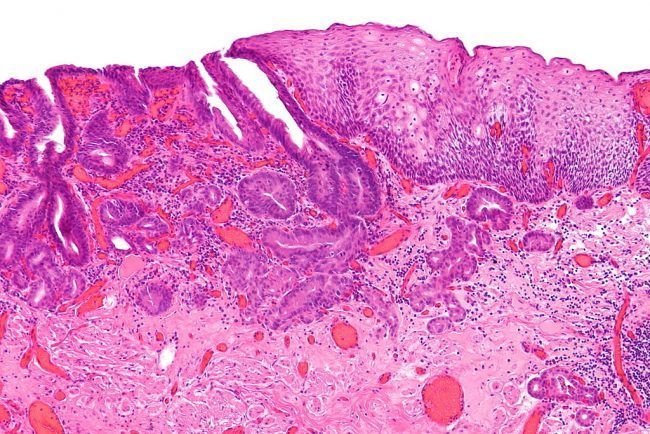Esophageal cancer incidence and mortality trends varied substantially across Europe over the last few decades, with important differences between sexes and the two main histological subtypes, squamous cell carcinoma (ESCC) and adenocarcinoma (EAC). Esophageal carcinoma affects more than 450000 people worldwide and the incidence is rapidly increasing.

Known risk factors for esophageal cancer include chemical exposure, diet, heredity and age – all factors already common to many other cancers. Mounting evidence suggests a causal relationship between specific bacterial infections and the development of certain malignancies.
In a recent study published in Infectious Agents and Cancer researchers, from the University of Louisville (UofL), KY, and Henan University of Science and Technology in Luoyang, China tested tissue from 100 patients with ESCC and 30 patients who did not have the disease (the controls). They tested samples taken from three types of esophageal tissue: cancerous tissue, non-cancerous tissue adjacent to cancerous tissue and normal tissue from the controls. They found that P. gingivalis was present in 61% of cancerous tissue samples and only 12% of adjacent tissue samples. They found none in the normal tissue samples.

This findings it could mean that eradication of a common oral bacterium could help reduce the significant number of people who develop ESCC. To detect P. gingivalis in the tissue samples, the researchers measured expression of lysine-gingipain, an enzyme unique to the bacterium. They also looked for DNA traces of the bacterial cell. They found levels of both the enzyme and the bacterial DNA were significantly higher in the cancerous tissue of ESCC patients than in surrounding tissue or tissue of normal controls.
They demonstrate for the first time that P. gingivalis infects the epithelium of the esophagus of ESCC patients, establish the association between the infection of P. gingivalis and the progression of ESCCe, and suggest P. gingivalis infection could be a biomarker for this disease.
This study suggests that:
- Improving oral hygiene and treating periodontal diseases will reduce ESCC risk
- Screening for P. Gingivalis in dental plaque will identify the susceptible subjects
- Using antibiotics or other antibacterial strategy will prevent ESCC progression












